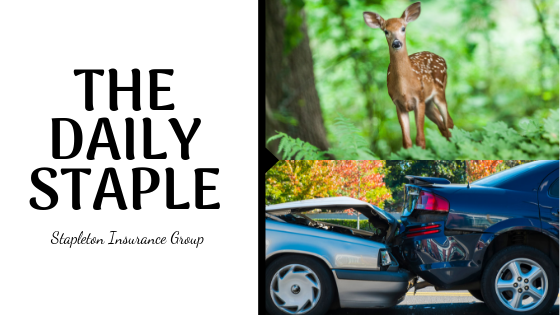Who hasn’t experienced having windshield chip or crack due to a stone being thrown, a deer that you didn’t see coming, a patch of ice or slick roads that resulted in your car meeting a tree or utility pole, not to mention the possibility of you or another driver not paying attention on the road and resulting in an accident? Most of us probably have, so what happens after these incidents occur? You call your insurance company to find out what is covered and what isn’t right? That’s right, but two out of the five examples given will be filed differently when making the claim. So here lies the question: What is the difference between Comprehensive and Collision Coverage? Search no further for the answer! We have the basics that you need to know when it comes to knowing the difference:
Collision and comprehensive coverages provide financial safety nets in the event that your vehicle is physically damaged and needs to be repaired or replaced. Although these coverages are generally not required by state laws, they can reduce your financial hardship during a loss.
Also, if you are financing a loan for a car, your lender will most likely require both collision and comprehensive coverage as part of your car insurance policy.
Collision Coverage (The Tree, Pole or Another Car)
Collision coverage pays for the cost to repair damages to a vehicle due to an accident, either with another vehicle or an object. Typically, you will collect only the actual cash value of your car versus the replacement cost value. Gap insurance protects you in the event you owe more than your vehicle is worth.
- Collision coverage is generally the most expensive portion of a car insurance policy.
- Premiums are based on a number of factors, including your deductible, driving record and the type of car you drive. If your driving record is fairly clean (no or very few tickets or accidents), your premiums will be lower because you are less likely to have a collision.
Comprehensive Coverage (The Stone or Deer)
Comprehensive coverage pays for damage to your vehicle that is caused by theft, vandalism, fire, natural disasters or hitting an animal.
- Comprehensive coverage comes with a deductible and the insurer will only pay as much as the vehicle is worth at the time of the incident.
- To calculate how much your car is worth, look up the Kelley Blue Book value or the National Automobile Dealers Association’s Official Used Car Guide value. If your car is low in value, the yearly premiums for comprehensive coverage may not be a sound investment.
- Comprehensive coverage has many limitations, so it’s best to review your policy carefully to make sure you are properly covered
We are always ready to answer any other questions that you may have and encourage you to contact us to learn more about collision and comprehensive coverage, and how we can protect you against losses.

